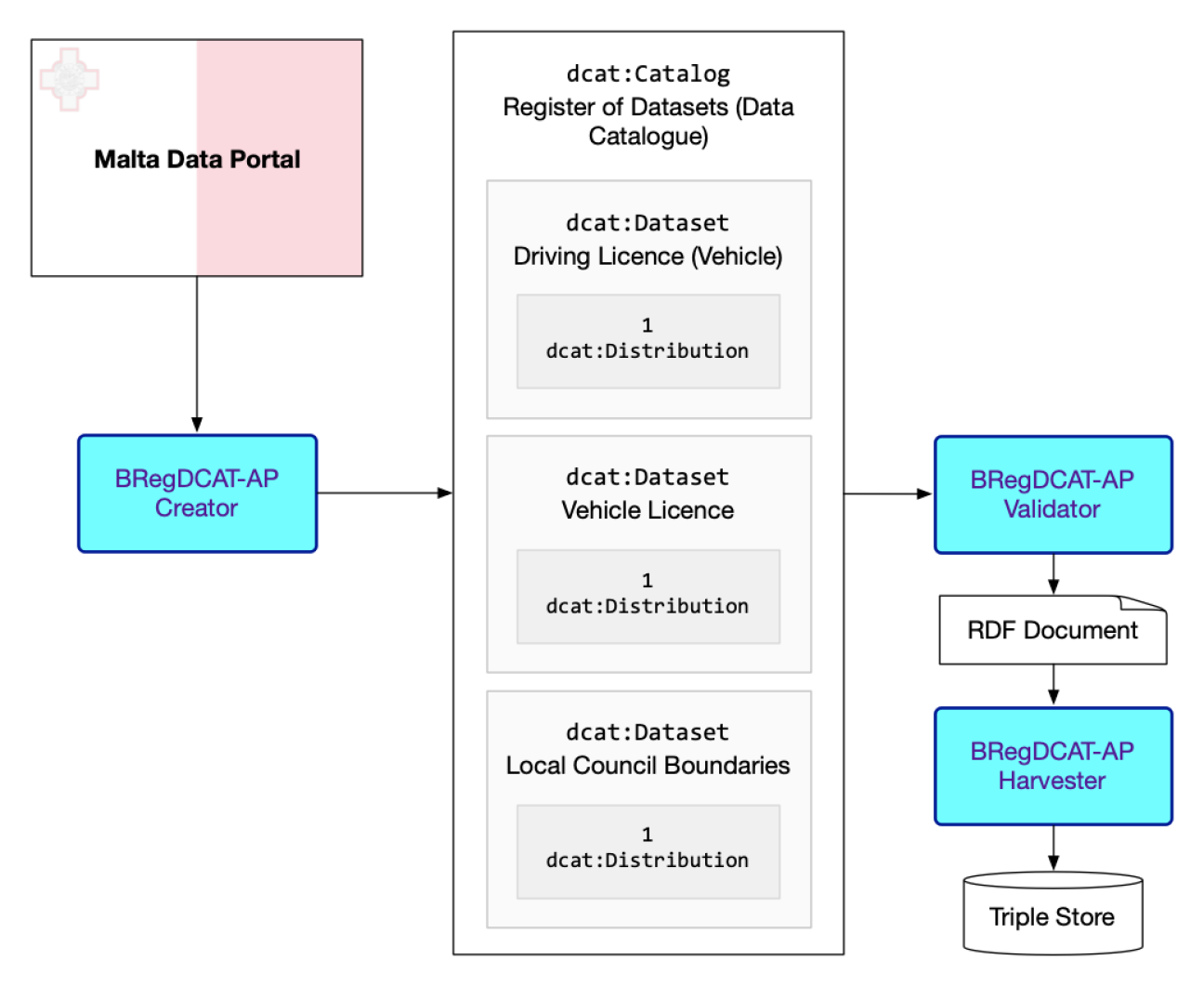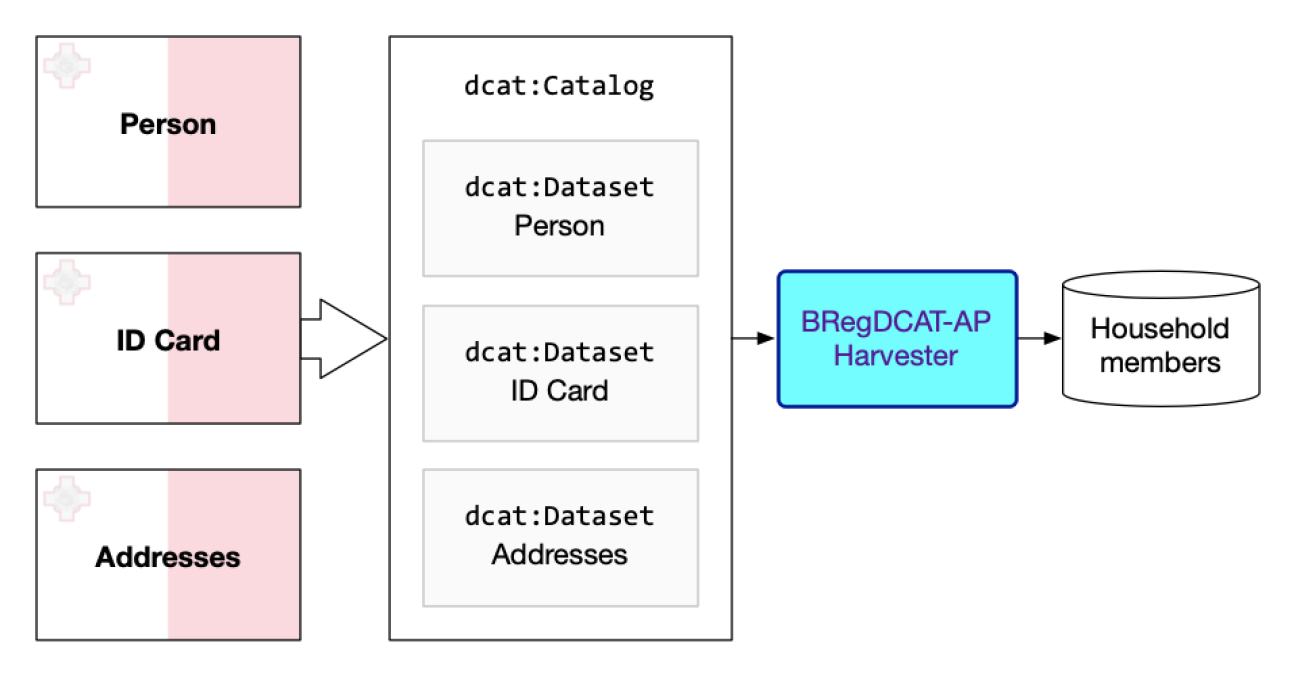
Malta Information Technology Agency (MITA) is in charge of most interoperability activities, including technical assets, occurring in Malta. MITA is interested in using BRegDCAT to reduce interoperability barriers for identity validation processes. In this sense, two different use cases were proposed: one focused on the area of vehicles and one focused on the citizen's domain.
Description
Use-case: Vehicles area
This case was proposed in order to improve existing and create new services for fighting against vehicle theft and trafficking, automatic vehicle monitoring and other possible applications to be explored.
Malta is a member of EUCARIS, the European car and driving licence Information System. EUCARIS provides opportunities for countries to share their car and driving licence registration information and other transport related data.
However, the data Malta provides to EU institutions is not directly available. The administration of the specific base registries, namely the Vehicle Registry, takes place at a national level through the Ministry for Transport and Infrastructure.
Use-case: Citizens domain
This case was proposed for the identification of persons that live in the same household, for the purpose of quarantine control due to COVID-19.
Public health authorities need to find out who is to be placed under obligatory quarantine. Hence, the public health superintendence needs access to the right data for issuing ASAP -in order to be effective- the corresponding orders.
Technical description
Use-case: Vehicles area
In a similar fashion to the proof of concept in Norway, real-life examples of catalogues and datasets were represented in RDF using BRegDCAT-AP. Unlike Norway, which explicitly provided the datasets to be described, the examples in Malta were selected from the Malta Data Portal by the ABR Team. The following diagram represents a high-level view of this process:

Figure 1. Proof of concept – Malta – Vehicles use case
Due to the fact that the RDF document was being created from the ground up, the BRegDCAT-AP Creator proved to be a useful tool to avoid the error-prone task of manually writing RDF documents while considering the finer details of the BRegDCAT-AP specification.
Three distinct datasets were selected: two related to the transport domain and another one related to the geographical domain. All of them were logically grouped under a single catalogue, with a single distribution being available for each one of them. These datasets, in conjunction with the ones present in the pilot in Norway, provided representation for a reasonable variety of themes. The resulting RDF document is publicly available in the following URL.
Use-case: Citizens domain
As Malta does not have a specific Household Register, all persons listed as residing in the same address can be considered members of the same household. Two base registers are involved: the Person Register and the Address Register, as well as the Identity Card Holders Register linking persons with their registered residential addresses. Note that the Address Register is part of the Location base register.
The BRegDCAT-AP Harvester is used in the realisation of this proof of concept, as described in the following diagram:

Figure 2. Proof of concept – Malta – Citizens domain use-case
Using the BregDCAT-AP as a common language between the different data models will make the exchange and integration of data between public administrations more efficient.
Results
The BRegDCAT-AP Validator and Harvester tools proved to be valuable for automating the processing, validation and merging of the generated RDF sources into the triple store.
The final outcome of the pilot was a website where the harvested data was visualised in a user-centric way. The following image presents a screenshot of the vehicle datasets as presented by the faceted browser:

Figure 3. Visualisation of pilot results - Malta

